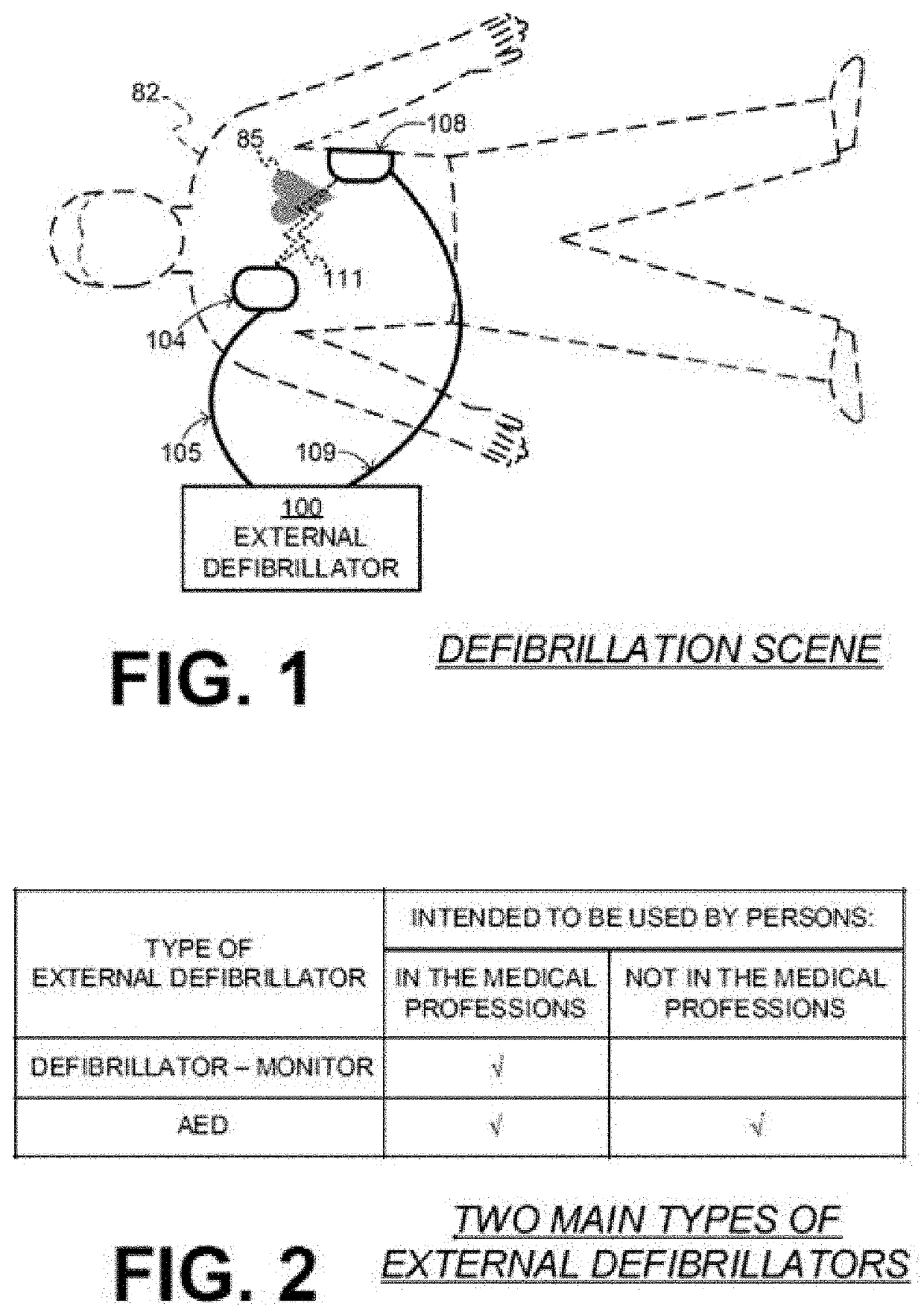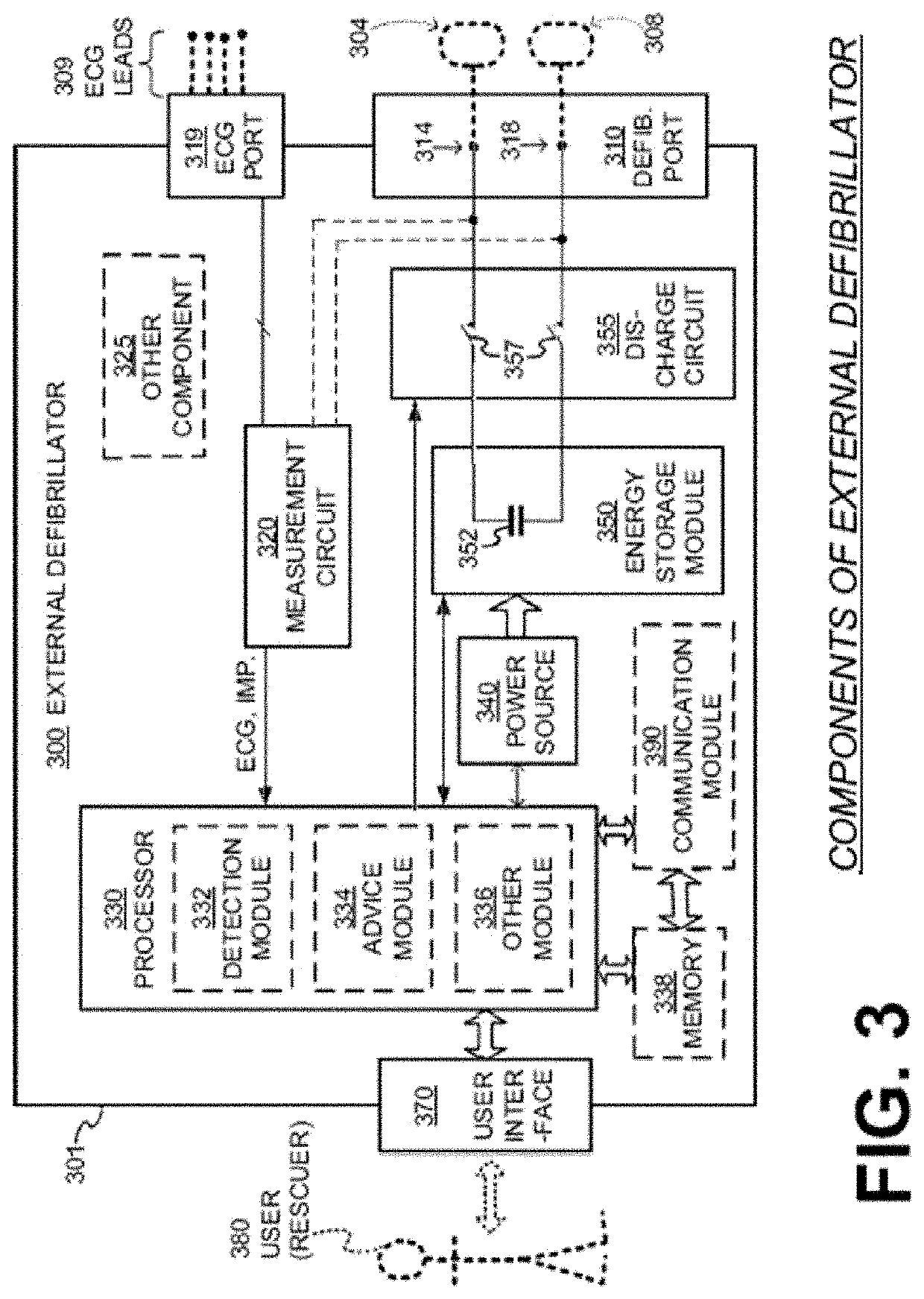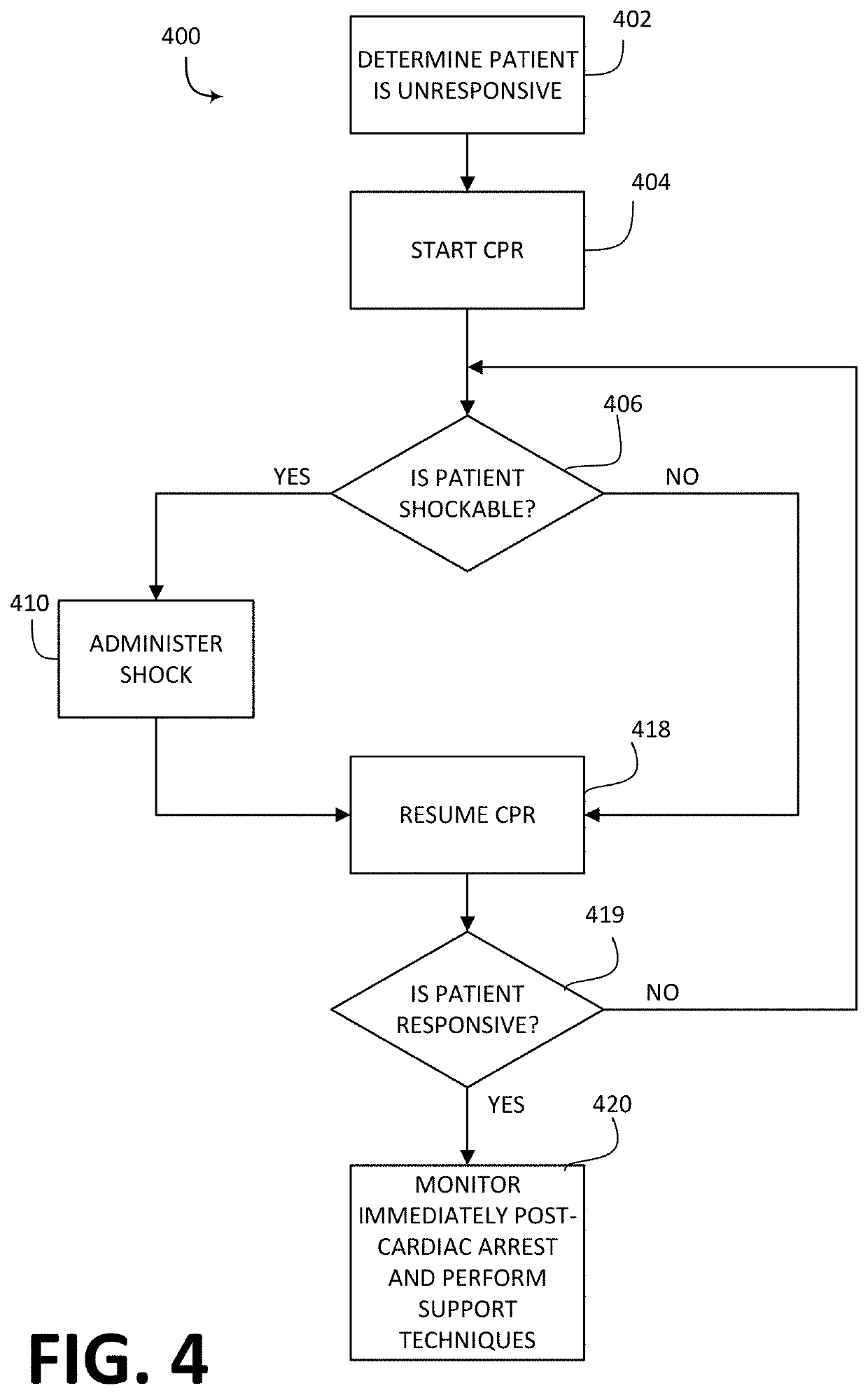Determining post-shock treatment based on heart viability
- Summary
- Abstract
- Description
- Claims
- Application Information
AI Technical Summary
Benefits of technology
Problems solved by technology
Method used
Image
Examples
Embodiment Construction
[0027]The American Heart Association (AHA) promulgates guidelines to follow for application of defibrillation therapy and cardiopulmonary resuscitation (CPR) during adverse cardiac events. The current disclosure provides monitoring patient parameters during an adverse cardiac event to determine if the patient should be treated according to standard guidelines or should be provided with an alternative customized treatment. This assessment and treatment customizing improves patient outcome by selecting and providing more relevant treatments.
[0028]As one example, external pacing, also known as transcutaneous pacing, involves the delivery of multiple electric shocks to a patient in order to pace the patient's heart. Pre-hospital cardiac arrest patients experiencing asystole or bradycardia, however, are not typically receptive to external pacing. Such pacing may produce electrical capture but fail to move blood due to the profound cardiac injury from an extended period of ischemia.
[0029]...
PUM
 Login to View More
Login to View More Abstract
Description
Claims
Application Information
 Login to View More
Login to View More - R&D
- Intellectual Property
- Life Sciences
- Materials
- Tech Scout
- Unparalleled Data Quality
- Higher Quality Content
- 60% Fewer Hallucinations
Browse by: Latest US Patents, China's latest patents, Technical Efficacy Thesaurus, Application Domain, Technology Topic, Popular Technical Reports.
© 2025 PatSnap. All rights reserved.Legal|Privacy policy|Modern Slavery Act Transparency Statement|Sitemap|About US| Contact US: help@patsnap.com



